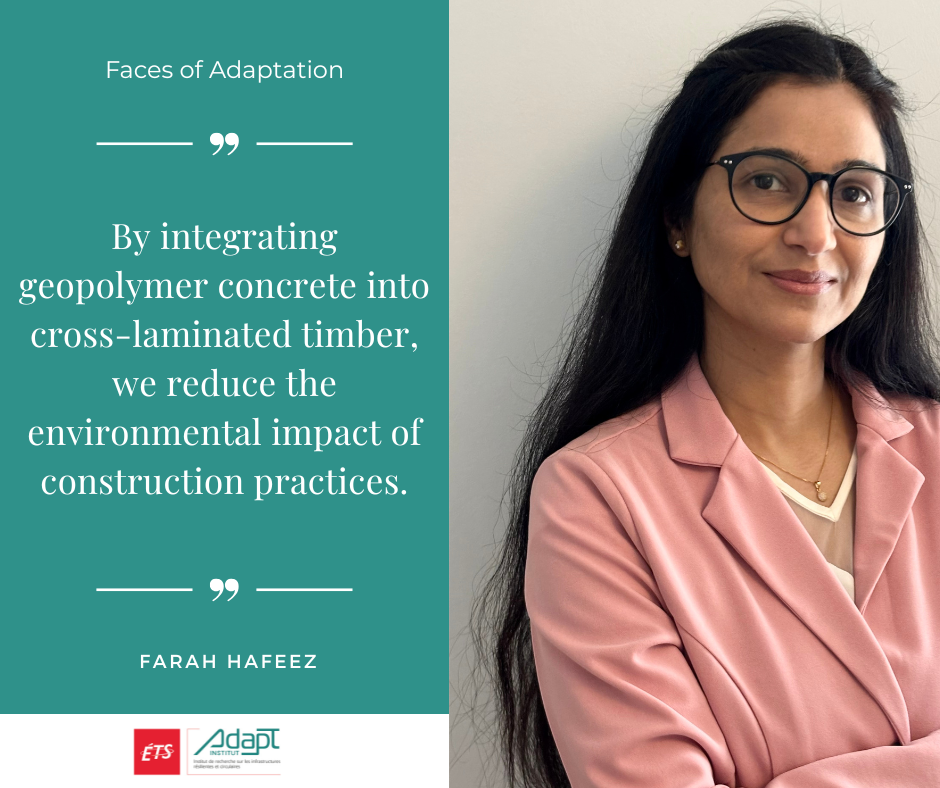Toward Low-Carbon Sustainable Construction

Assistant Professor in Building, Civil, and Environmental Engineering at Concordia University, Farah Hafeez is the first female engineer in her family. Moving to Montreal gave her the opportunity to specialize, and her research aims to improve construction practices. Originally from Pakistan, she founded the Wood Research Group (WRG) at Concordia University, which works to reduce harmful emissions and make our planet a better place to live. Her project — supported by ÉTS and the AdapT Institute — offers a new approach to low-carbon building materials.
1) What will this scholarship allow you to accomplish?
This scholarship will support research and implementation of sustainable materials in construction. It’s a way to contribute to the development of low-carbon, environmentally responsible construction solutions. We will also help update design standards and guidelines within the industry.
2) Can you explain your research project in three sentences?
Specifically, we are integrating geopolymer concrete (GC) into cross-laminated timber (CLT) panels to create more durable and efficient construction materials. We will evaluate the mechanical performance of GC–CLT panels, including their bending and shear capacities. We aim to develop advanced numerical models using Abaqus software and artificial intelligence techniques to simulate their behavior. The project will contribute to updating design standards and guidelines to promote the use of more environmentally friendly materials.
3) How does your work relate to climate change?
Our research focuses on two ecological materials: CLT and geopolymer concrete. Both help reduce global CO₂ emissions, and their use supports sustainable practices in large-scale industrial construction projects. By improving performance and encouraging the adoption of these green materials, we aim to lower the carbon footprint of construction practices. Advancing toward greener construction methods contributes directly to climate resilience and global sustainability.
4) What inspired you to take an interest in these topics?
As an engineer, I’m concerned about the limits of our natural resources. I work to incorporate recycled materials into construction practices — both in my home country and here in Canada. I’m driven by the growing need to find sustainable solutions to fight the effects of climate change and environmental degradation. The construction sector is a major contributor to carbon emissions. I look forward to exploring the potential of innovative materials.
5) What are the positive outcomes for society?
I would say there are three key benefits: greater durability, updated design standards, and multiple economic advantages.
First, greater durability. Mass timber offers numerous benefits — carbon sequestration, faster construction, and biophilic effects. By integrating geopolymer concrete into CLT, we reduce the environmental impact of construction practices.
Second, updated design standards. This research will help develop revised guidelines and standards (such as CSA O86) for GC–CLT panels, providing valuable tools and knowledge for design engineers.
Finally, economic benefits. Promoting the use of innovative and recycled materials can stimulate growth in the green construction sector, potentially generating new job opportunities and economic gains for the industry.
